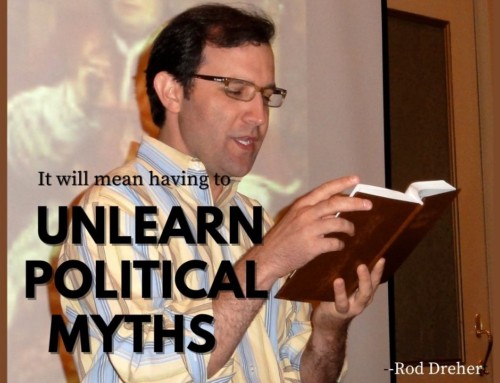In Part 1, we described the problem of post-modernism’s advance.
Today, we’ll talk about pushing back.
1. Fix Your Mindset
First, you need to square your shoulders and adopt the right attitude, much like what Victor Davis Hanson described on a recent television appearance. Recalling the deeply divided country of Abraham Lincoln’s presidency, he says our president must respect sacrifices made generations ago and tell today’s radicals, “We don’t want to offend you. We don’t want to go to war with you, but we are not going to let you, a minority, dictate to a majority that is trying to keep a wonderful nation.”
Also, I recommend this Jordan Peterson speech, in which he teaches useful strategies for today’s conservatives. My favorite of Peterson’s tips? Stop apologizing.
2. Read.
Post-modernists are eager to hand out reading lists, bringing white people up to speed on racial justice.
Not so fast, says Danusha Gosca, a New Jersey professor. “I lived under Soviet Communism in my parents’ homelands of Poland and Czechoslovakia. I stood in line for lard and I met people who had been tortured for thoughtcrimes . . .[The white liberal’s] desire to see her own country incinerated is incomprehensible.”
If Gosca could get past her woke friends’ wall of ideological resistance, this is the reading list she would offer. She includes teacher accounts of inner-city schools, an examination of Affirmative Action, and a closer look at black leaders of all stripes.
3. Mind Your Kids’ Education.
This Catholic parent received a letter encouraging “conversations about white privilege.” Given that white privilege discussions “[fuel] the fires of resentment and division,” and given that the whole post-modern package is little more than re-branded Marxism, she suggests that “[s]tudents need to learn about the gross violations suffered under 20-th century communist regimes.”
If you’re a teacher, you also have “kids” who need knowledge, not indoctrination. Please step up like this Virginia teacher when your school board injects post-modernism into the curriculum.
4. Block Their Moves.
Maybe you never mastered chess (I certainly didn’t), but if you feel the rumblings of future implicit bias trainings in your workplace, you might take a hint from this STEM professor: volunteer for the committee. “You will have to endure all manner of nonsense, but do it.” Getting in there early should save your workplace from a swerve into the inane.
Have no idea what you would say or do on said committee? The professor got her bearings here.
The authors at New Discourses are veterans of this battle. In fact, they pulled off a spoof against wokeness by writing a series of fake academic papers and publishing them in real journals. Peers eventually caught on, but not before the trio proved that the gatekeepers to academic publishing can’t tell the difference between made-up woke jargon and the real thing.
5. Join Forces
The whole world has not gone crazy. There are tons of good people out there, fighters and organizers among them. Articles and podcasts that capture your attention often feature guests who run institutes, projects, initiatives, etc. Many of them care about the things you care about.
You need their advice. They need your support.
Visit their websites. Sign up for their mailing lists. We’re stronger together.
Here are a few that I welcome into my inbox:
Mass Resistance
Ruth Institute
Eagle Forum
David Horowitz Freedom Center
6. Celebrate the Victories
Christopher Rufo, a reporter and filmmaker, recently exposed documents that convinced President Trump to cease bias training based in critical race theory, in federal departments and by federal contractors. Post-modernism, diversity, equity and inclusion, and critical race theory all belong to the same worldview. Ever wonder about the trainers and how much money they’re making? Whistleblowers are currently feeding the info into Rufo’s inbox.
You can watch Rufo here or listen here
Rufo argues that we’re already losing critical talent in places like the Sandia labs due to these oppressive training sessions.
Photo credits: Deposit photos













Leave A Comment